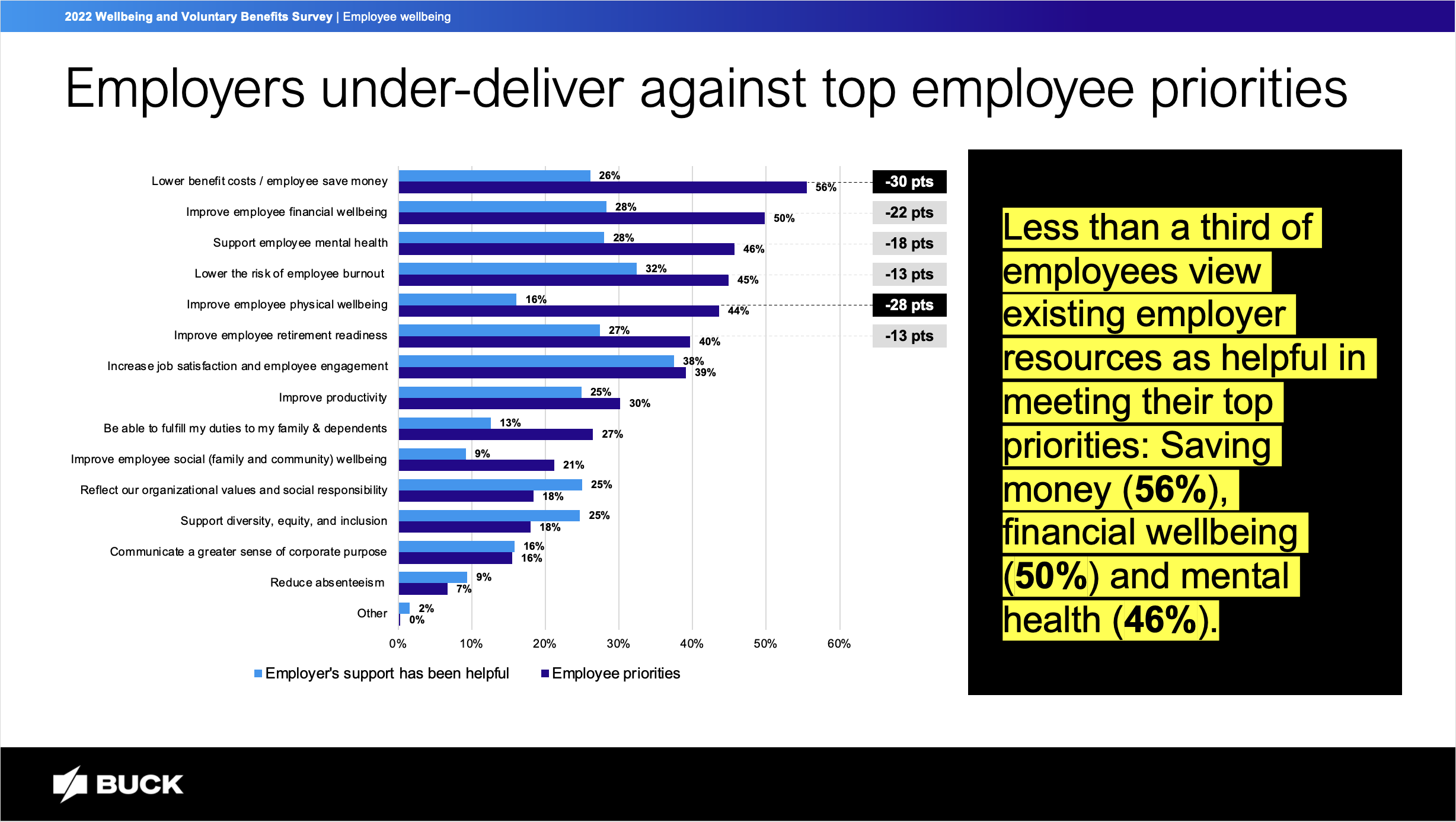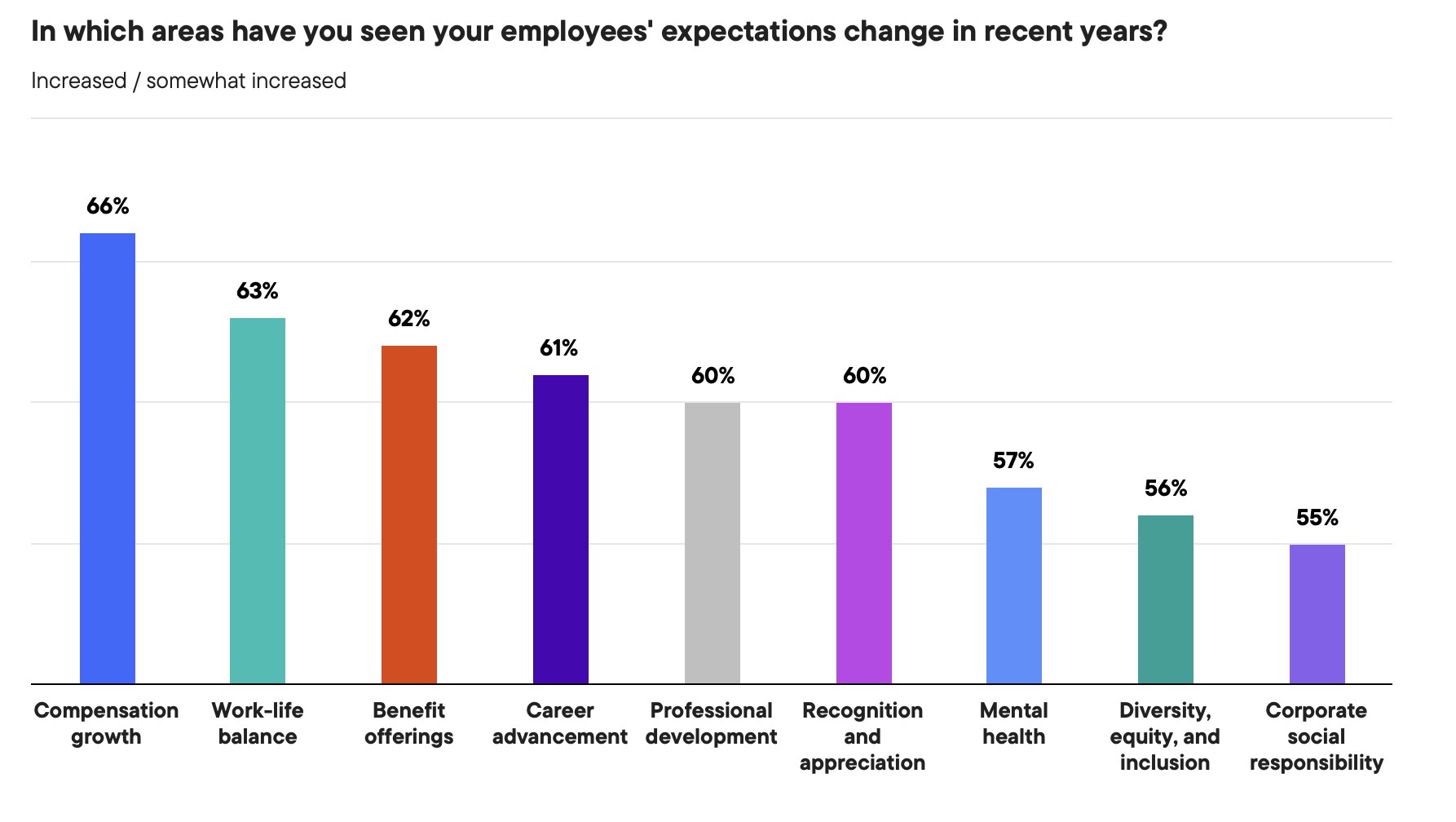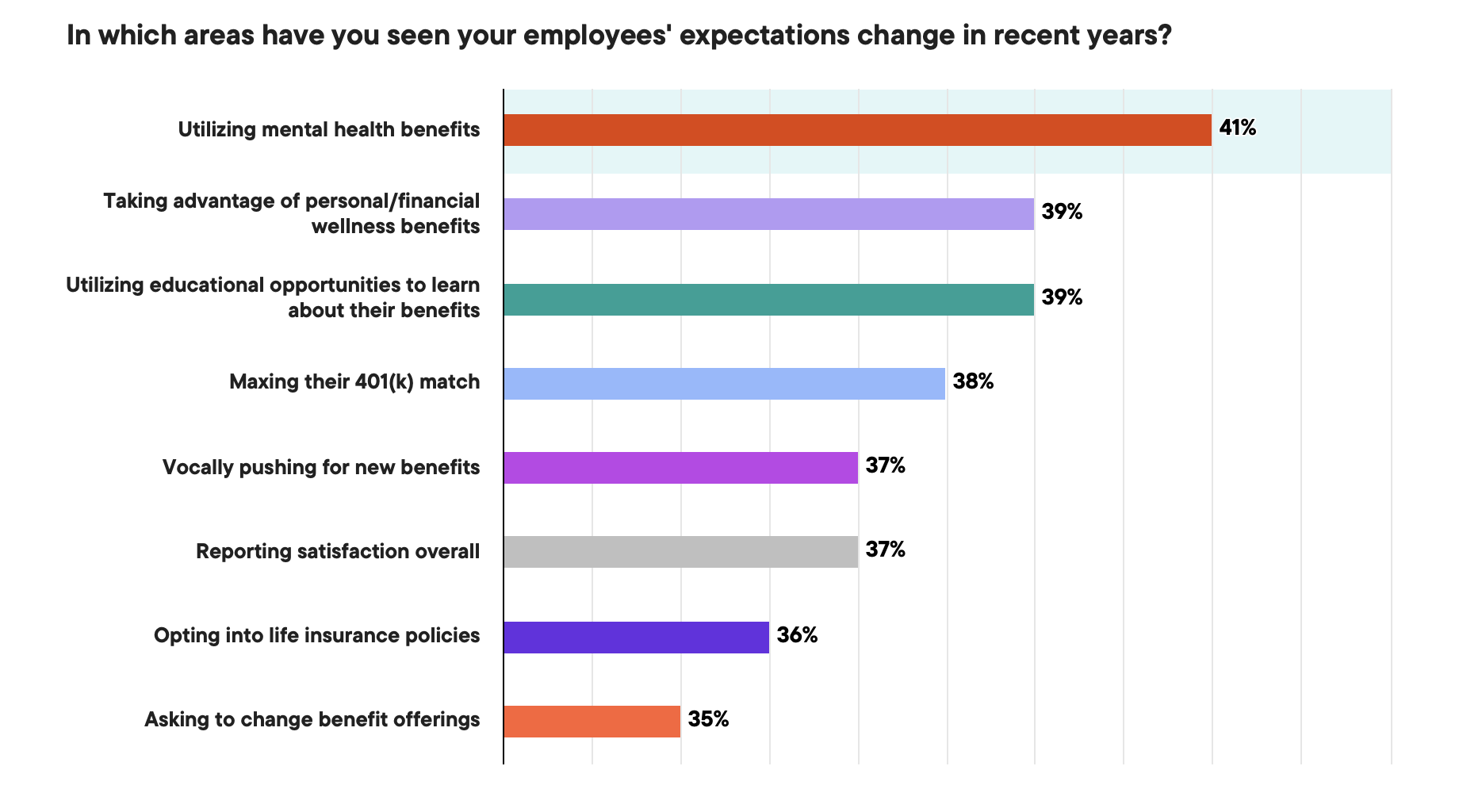Discover effective ways to incentivize your team through employee rewards and recognition programs.
Key Takeaways:
Ensure that your rewards and incentives are hitting the mark and providing real value to your employees.
- Historically, employers under-deliver against top employee priorities (while thinking they are doing better than they are).
- 91% of employees expect their benefit offerings to keep pace with modern challenges (2).
- 80% of employees would choose additional benefits over a pay raise (3).
Understanding Employee Motivation
To effectively incentivize your team, it's important to understand what motivates your employees. Every individual is different, and what may be motivating for one person may not be for another. Take the time to get to know your employees and their unique needs and desires. After all, Human Resources is all about the human!
Some common motivators for employees include: recognition for their hard work and achievements, opportunities for growth and advancement, a sense of purpose and meaning in their work, good work-life balance, a positive and supportive work environment, and financial well-being and lifestyle benefits.
According to the Buck Wellbeing and Voluntary Benefits Survey, employers and employees favor community-building as an area to expand resources for social wellbeing (1). However, less than 10% of employees think current support is hitting the mark.

By understanding what motivates your employees, you can tailor your rewards and incentive programs to better meet their needs and increase their overall satisfaction and engagement.
Further, Franklin Templeton's 2025 "Voice of the American Workplace" survey found that 66% of employees have changed expectations about compensation growth in recent years, while 62% have changed expectations regarding benefit offerings and 60% regarding recognition and appreciation (2). "To attract and retain top talent, employers are enhancing flexibility, mental health benefits and personalized benefit options...[and] there is a growing need for transparency and open communication, with employees expecting more support for their financial future and well-being" (2).

Types of Employee Rewards
When it comes to employee rewards, there are a variety of options to consider. Instead of focusing solely on traditional rewards like pizza parties and company swag, think about what rewards would benefit your employees and make a meaningful impact on their lives. According to a Glassdoor Employment Confidence Survey, 80% of employees would choose additional benefits over a pay raise (3).
Some popular types of employee rewards that focus on improving benefits include:
- Extra time off or work flexibility: Giving employees the opportunity to take additional time off, such as through Volunteer Time Off (VTO) can be a valuable reward. Further, MetLife reports that Employees who have flexibility in where they work are the most satisfied (74%) compared to fully remote workers (61%) and those required to be on-site (54%) (4).
- Access to voluntary benefits: Fertility benefits, parental leave policies, pet insurance, and EAPs (Employee Assistance Programs) offering access to legal support and financial planning are among the voluntary benefits that have gained traction with employees (4). The graph below shows which benefits have gained traction in recent years.
- Shopping rewards: Providing employees with shopping rewards, such as gift cards or discounts, allows them to treat themselves and enjoy the fruits of their hard work.
By offering these types of voluntary benefits, you can create a more positive and supportive work environment, leading to happier and more satisfied employees.
From Franklin Templeton's "Voice of the American Workplace" Survey (2):

Implementing an Incentive Program
Implementing an incentive program can be a powerful way to motivate and reward your employees for their hard work. Here are some steps to consider when implementing an incentive program:
1. Set clear and measurable goals: Define what you want to achieve with the incentive program and set specific goals that can be measured.
2. Choose the right rewards: Consider the preferences and needs of your employees when selecting rewards. Offer a variety of options to cater to different interests, such as discounts or gift cards to a range of vendors.
3. Communicate the program effectively: Clearly communicate the details of the program to your employees, including how they can earn rewards and what they need to do to participate.
4. Track and measure progress: Regularly track and measure the progress of your employees towards their goals. Provide feedback and recognition along the way to keep them motivated.
5. Evaluate and adjust: Continuously evaluate the effectiveness of the program and make adjustments as needed. Solicit feedback from employees to ensure the program is meeting their needs and expectations.
By following these steps, you can create an effective incentive program that drives motivation and engagement among your team. Learn about how to create a rewards program within BenefitHub's platform.
Measuring the Impact of Rewards
Measuring the impact of your rewards is essential to ensure that they are effective in motivating and engaging your employees. Here are some ways to measure the impact of your rewards:
- Employee surveys: Conduct regular surveys to gather feedback from your employees about the effectiveness of the rewards and incentive programs. Ask them about their level of satisfaction and whether they feel motivated and recognized.
- Performance metrics: Track key performance metrics, such as productivity, quality of work, and employee turnover, to see if there are any positive changes after implementing the rewards program. BenefitHub includes metrics within our rewards program to provide tracking and analytics for all activities. Learn more.
- Employee feedback: Encourage open communication and feedback from your employees. Listen to their suggestions and concerns to gain insights into the impact of the rewards.
By regularly measuring the impact of your rewards, you can make data-driven decisions and adjustments to ensure maximum effectiveness.
Creating a Culture of Recognition
In addition to tangible rewards, creating a culture of recognition is crucial for motivating and engaging your employees. However, it can be difficult to make a meaningful impact on culture - it's not as easy as hanging up a motivational poster. One place to start is to regularly acknowledge and appreciate employees' accomplishments and hard work. This can be done through public recognition, such as team meetings or company-wide emails, or through one-on-one conversations.
A good culture also has good teamwork. Encourage peer-to-peer recognition, where employees recognize and appreciate each other's contributions. This can be done through a recognition platform or simply by encouraging a positive and supportive work environment. Celebrate milestones and achievements as a team. This can be done through team outings, special events, or small celebrations in the workplace.
Lastly, it is important to invest in your employees. Provide opportunities for professional development and growth. Show your employees that you believe in their potential and are invested in their success. Also consider tying physical rewards, like gifts, as a part of your recognition program.
By creating a culture of recognition, you can foster a sense of belonging and appreciation among your employees, leading to higher levels of motivation and satisfaction.
Key Takeaways
So, what do employees want? Don't make assumptions based on historical trends or buzzwords, as employee preferences differ by age groups, genders, industries, and more. Rely on statistical data or by polling existing employees.
Studies have found that employees want stability, financial and mental well-being, access to additional benefits, and job satisfaction, and more. Consider implementing a rewards program, expanding benefits offered, and improving employee communication to foster a culture of openness and respect. Learn more about how BenefitHub can help or contact us today.
Sources:
(1): Buck 2022 Wellbeing and Voluntary Benefits Survey Report
(2): Franklin Templeton, Voice of the American Workplace survey
(3): Harvard Benefit Review, "The Most Desirable Employee Benefits"
(4): Metlife's 20th Annual U.S. Employee Benefit Trends Study 2022

